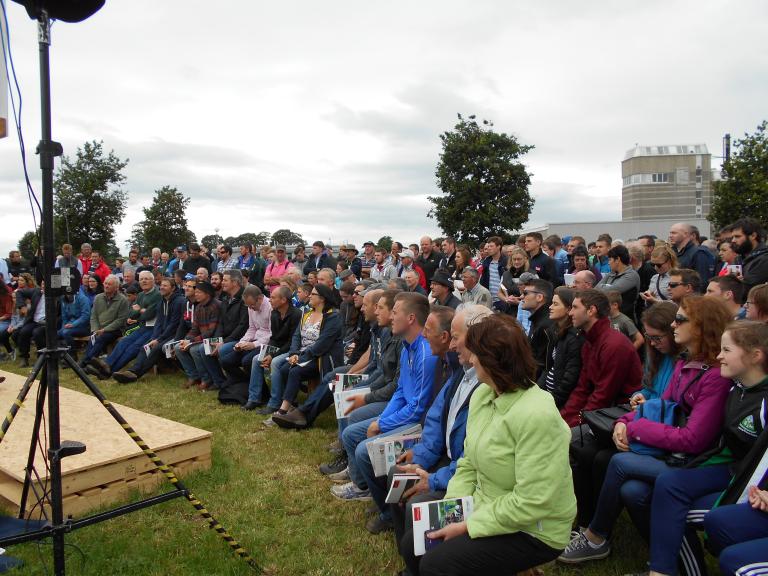- Location:
-
Flintshire
- Funding amount:
-
EAFRD (WG RC_RDP Wales) contribution£954.00
Project Description:
An educational visit primarily to attend Moorepark 17, a biennial event held by Teagasc at their Animal & Grassland Research and Innovation Centre, Cork, Ireland where the main themes were “Irish Dairying – Challenges and Opportunities and the Principles of Resilient Dairying.
What will the project achieve?
To establish the practical and theoretical aspects which may be utilised on Welsh Dairy Units.
Who are the project beneficiaries?
Visiting attendees in particular and dairy industry in general.
What was the result of the project?
There were several messages, but in summary, here are the main messages of the crew that came home –
- People – One of the several problems of the industry is to recruit and retain staff, whether it is family members or employees. It is important to have working conditions that allow time off and have attractive and convenient facilities. There is a need to invest in training. Not only the staff but how to manage and get the best from staff. We must foster a simple system of managing the business so everyone understands what the goal is and have simple and understandable targets.
- Grass – It is important to grow grass to the best quality so that the cow can turn it to milk and leave a profit for the farmer. To do this the soil must be in good condition, the right index of phosphate and Potassium and get the correct pH by using lime. Then the right type of grass – Ryegrass. It was encouraging to know that pastures that had been bred in Aberystwyth were very high on their choice of the best pastures. With improvement in the soil, pasture and management there is a tremendous room for improvement on the grass that can be grown and use to produce milk.
- Cow – The cow must have the right genetics to make the most out of the pasture. There is no point in using large cows from North America or Canada, must use small Frisian cows. The most effective these days, probably are the ones that come from New Zealand.
- Spraying reseeded fields – To control dock, it is important to control dock early. The downside is that the majority of sprays available kills the clover. So it is best to spray and then reseed the clover again with a machine such as Einbock.
- Clover in grazing fields – we need about 25% of clover in fields in order to make enough of a difference. What difference? – Breaking down the nitrogen from the sack and also raises output per cow. The downside is that there is a tendency for cows to swell if they over-graze clover, so care is needed.
Lessons Learned:
Many of the messages are not new, but they need to be heard several times before they are sometimes accepted!
There was a great deal of information on all areas of milk production, and perhaps too much information, but must say, it was nice to see all the support the industry had through European funding and the support from their own government.
Interesting, and concerning, to note that milk production had increased by 35% following the abolition of milk quotas in 2012 with the seemingly ambitious target of a 50% increase by 2020 being now easily achievable.
Further project information:
- Name:
- Gwyn Rowlands
- Telephone number:
-
01490 340500
- Email address:
- gwyn.rowlands@cadwynclwyd.co.uk
- Email project contact
- Project website:
- http://www.cadwynclwyd.co.uk/

